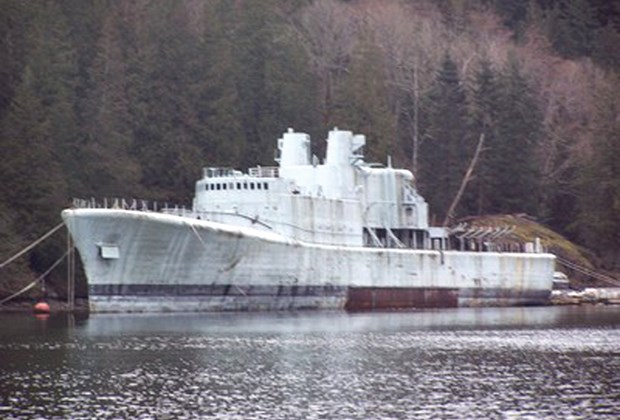The Artificial Reef Society of B.C. says it is in the final stages of preparation to sink HMCS Annapolis in Halkett Bay Provincial Marine Park off Gambier Island in Howe Sound.
But groups opposing the plan to sink the decommissioned destroyer say the reef society is jumping the gun as there are environmental and legal issues that are still not resolved.
Since 2008, the project has faced opposition from the Save Halkett Bay Marine Park Society and Georgia Strait Alliance as well as financial challenges. For a time, the ship was even seized by the court over a dispute with the company mooring it.
“Throughout all that difficulty, we navigated successfully to where we are right now through careful planning and adhering to the rules and regulations and being fully compliant and even exceeding the standards with the government to the extent that we’re now fully permitted,” said Howard Robbins, artificial reef society president. “We’re hoping to get it down before the end of January.”
When the time comes, the 113-metre vessel will be towed into place and anchored to concrete blocks before specially designed explosive charges will punch square holes in the hull allowing it to sink about 32 metres to the seafloor.
Once inspected, it will be fully open to be explored by qualified divers who will be encouraged to document the various species that move into the wreck in a citizen-based science project called the Annapolis Biodiversity Index Study.
But the Save Halkett Bay group hired an independent lab in November to take a paint sample from the hull, which was tested and shown to contain tributylin, a toxic anti-fouling agent designed to prevent sea life from growing on ship hulls. It was banned by the United Nations’ International Maritime Organization in 2008 and by the Canadian government in 2009.
“It doesn’t actually matter what the quantity is because it’s a substance that’s not allowed to be disposed of, especially at sea,” said Gary MacDonald, Save Halkett Bay spokesman. “We simply don’t understand why (the artificial reef society) isn’t pausing and really checking to make sure the ship is clean.”
Robbins, however, said he questions the validity of the Save Halkett Bay group’s testing and that he will defer to Environment Canada, which has the final say on the project. “We follow Environment Canada’s rules. They’re the ones that set the standards and they’re the ones that have certified the ship as ready to go and clean for the environment,” he said.
The remaining opposition is simply NIMBYism masking itself as environmentalism, Robbins said.
Save Halkett Bay is now formally asking Environment Canada for a board of review to re-evaluate the Annapolis’s permit and for a full independent inspection of all the materials aboard the ship. The group is also awaiting a response to its court petition to halt the sinking. The petition filed in B.C. Supreme Court in October cites the project’s failure to comply with provincial park regulations. The petition also cites other groups that have opposed the sinking, including the Islands Trust, on the grounds that sinking the ship would violate its land use bylaws and the United Church of Canada because it owns a campground on Halkett Bay where kids go canoeing and swimming.
Much of the controversy over the project has been misplaced, according to Jeff Marliave, vice-president of marine science at the Vancouver Aquarium and an independent arbiter on the project. The seafloor in the area where Annapolis will be sunk was permanently damaged by layers of Douglas fir bark piling up during log booming years, he said. “… I think, in all, this is a very safe place to put down a feature that will become a very safe dive site,” he said.
Marliave added the ship will create new habitat and keep divers from naively damaging more fragile, real reefs. “I would predict from what we know about Halkett Bay that we’re going to be seeing glass sponges and rock fish and all kinds of things,” he said.
Environment Canada could not provide a comment prior to press time.



